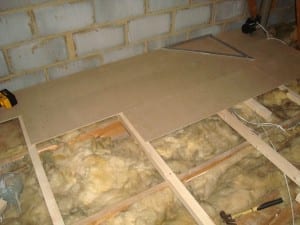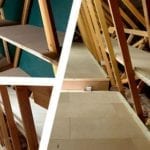
With winter on its way, if not here, we’re all turning up our heating to make sure we don’t freeze at home. This can get expensive if you’re losing a lot of heat through the roof, but insulating your loft will pay for itself within a year or two, and grants are sometimes available.
Cold Loft and Warm Loft
The two types of loft insulation are known, a little misleadingly, as cold loft and warm loft. A cold loft is where you insulate the loft floor, meaning heat is kept in the rooms below and doesn’t reach the loft space. In fact, this means that the loft’s temperature varies with the weather, and can actually get hot in the summer. For a warm loft, the underside of the roof is insulated, allowing heat into the loft space but not out of the roof.
Both have advantages, and the choice depends on the circumstances. Cold loft insulation is cheaper but makes it harder to use the loft for storage. If you want to store items that depend on temperature control, it may be worth paying extra for a warm loft.
Cold Loft Insulation
This is normally blanket-style glass or mineral wool, packed between the wooden joists to a depth of between 250 and 270 mm. If a thinner layer of insulation is already there, you can sometimes top it up, but it may need replacing. The insulation should go over water pipes and tanks, to prevent them from freezing, but electric cables should be left above the layer.
Cold loft insulation means you can’t rest anything on the existing joists. If you want to use the loft for storage, you can have cross joists installed, but a better option might be to have raised boards put in.
Warm Loft Insulation
This is laid along the inner side of the roof pitch and is normally either multi-foil or Polyisocyanurate slabs (PIR), although there are other options. This allows a temperature-controlled loft with the heat prevented from escaping, but it’s vital to allow ventilation space between the insulation layer and the roof itself.
Can I Do It Myself?
Cold loft insulation wouldn’t be beyond an expert DIYer, although you’ll need to familiarise yourself with a long safety checklist. Warm loft insulation, along with larger jobs like raised boards, should be done by a qualified person, and in general, it’s safer to leave the work to professionals.
If you have more questions about loft insulation, feel free to contact us.
Check out our ultimate loft insulation guide for more info.
Was this post useful? Here are some other’s you might like...





